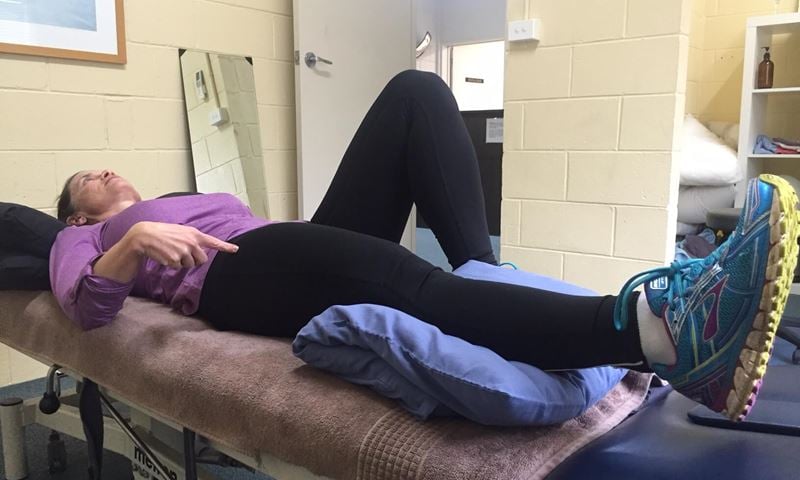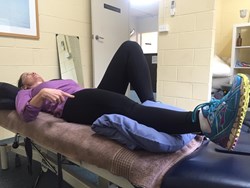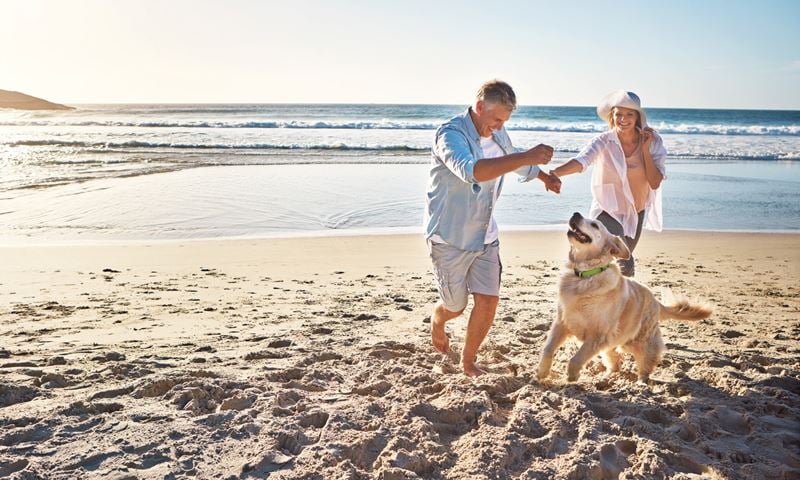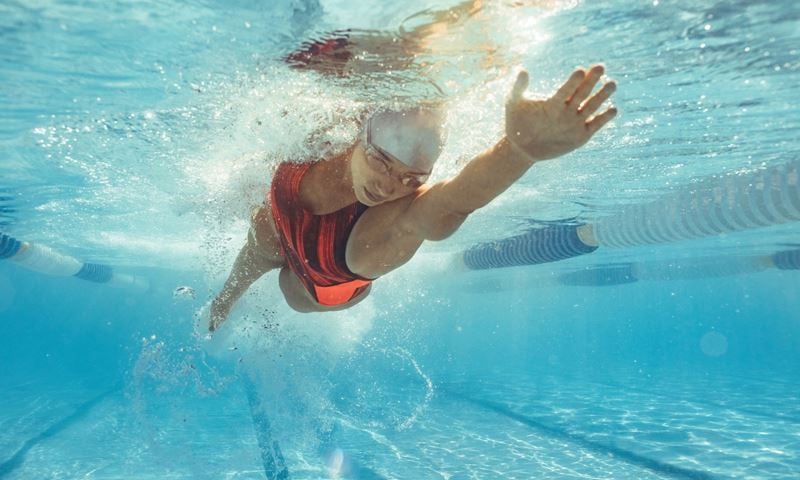Knees ain’t what they used to be? As we age, aches and pains can become common place, but they don’t have to be. Great Health speaks to physiotherapists Fioran Bourke and Louise Treston (B.Physio M.A.P.A) about what can cause knee pain and what simple steps you can do at home to strengthen the muscles that can cause pain and inflammation in the knee.
Knee muscles are important
There are many reasons for knee pain and weak knee muscles can be a cause. Your knee cap is held in place by the VMO (Vastus Medialis Oblique) muscle, which keep the patella aligned and your knees tracking correctly. When this muscle weakens, you may feel pain when doing everyday tasks like squatting, climbing stairs or running.
What are VMO muscles?
The vastus medialis oblique (VMO) is one of the quadriceps muscles which are above your kneecap at the front of your thigh. Quadriceps are the only muscles that are attached to your kneecap which is why strengthening them is crucial to helping resolve and avoid knee pain.
When should I get help?
Your doctor may be able to give you advice regarding muscle strengthening, however a physiotherapist is specifically trained to help you use exercise to improve health. You can book to see a physiotherapist without a doctor’s referral. Physiotherapy services may be covered under your extras health cover.
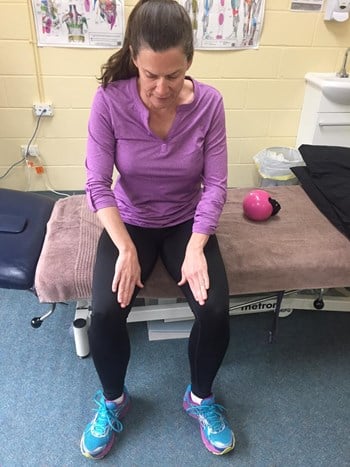 Physiotherapy intervention
Physiotherapy intervention
A good physiotherapist will investigate your problem, conduct an assessment and determine the exact cause of your knee pain. They may provide some hands-on treatment but general treatment for weak VMO will include exercises that you can do yourself at home. Doing your exercises regularly will help your recovery. The below exercises are just a sample of what a physiotherapist might give you. They are appropriate for most people to do. You should feel your muscles working, and you might get some muscle soreness, but if your pain persists or increases please touch base with a physiotherapist or GP.
Finding your VMO
Sit comfortably and put your fingers on your kneecap.
Move your fingers inwards 2cm and up 2cm onto the muscle.
Tighten your knee and push your foot down into the floor. You should feel the muscle tighten/clench.
Exercises to strengthen your VMO
Do these exercises each day. Start with level 1. When you can do the maximum amount of repetitions without any pain or discomfort then progress to the next level.
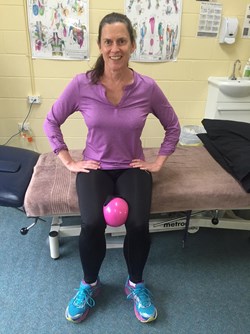 Level 1
Level 1
You’ll need a soft ball, or a small rolled up towel and a sturdy chair.
Sit in a chair, with a soft ball between your knees.
Clench your VMO and gently squeeze the ball with your knees.
Hold for 6 seconds and relax.
Start with 10 repetitions and build up to 20 repetitions. Repeat 3 times with a short rest in between.
Level 2
Use a pillow and your bed for this exercise.
Lying on your back with a pillow under your knee.
Lift the foot of the affected leg off the bed, pushing the knee into the pillow (allowing the knee to straighten).
Hold for 6 seconds lower foot and relax.
Start with 10 repetitions and build up to 20 repetitions. Repeat 3 times with a short rest in between.
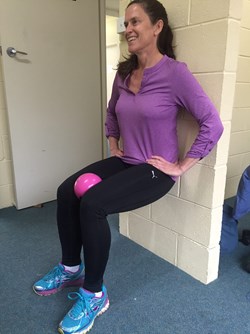 Level 3
Level 3
Use a soft ball or similar and a smooth wall. You may like to start with a chair next to you in case you have trouble returning to the starting position.
Standing with back against a wall, feet hip width apart.
Place ball between your knees.
Squeeze the ball as previously then squat down to a comfortable position and hold for 6 seconds before returning to starting position.
Start with 10 repetitions and build up to 20 repetitions. Repeat 3 times with a short rest in between.
Where to from here
- Maintaining or reducing weight by keeping active. Eating less packaged food is a great start.
- Make sure your shoes are not unevenly worn and are supportive. Inserts may help. Talk to your physiotherapist or podiatrist.
- Your physiotherapist may prescribe strengthening exercises for other parts of your body or stretches to promote flexibility or use tape to assist you to move pain free.
- Doing your specific exercises as well as maintaining physical activity are essential for improvement.
At a glance
- Knee pain can be caused by weak muscles holding the knee cap in place.
- Seeing a qualified health professional such as a physiotherapist is the best way to determine. the cause of knee pain and seek the best treatment.
- Recovery is up to you – doing your exercise program regularly will equal better results.
- Your extras health insurance may assist with the cost of treatment.
